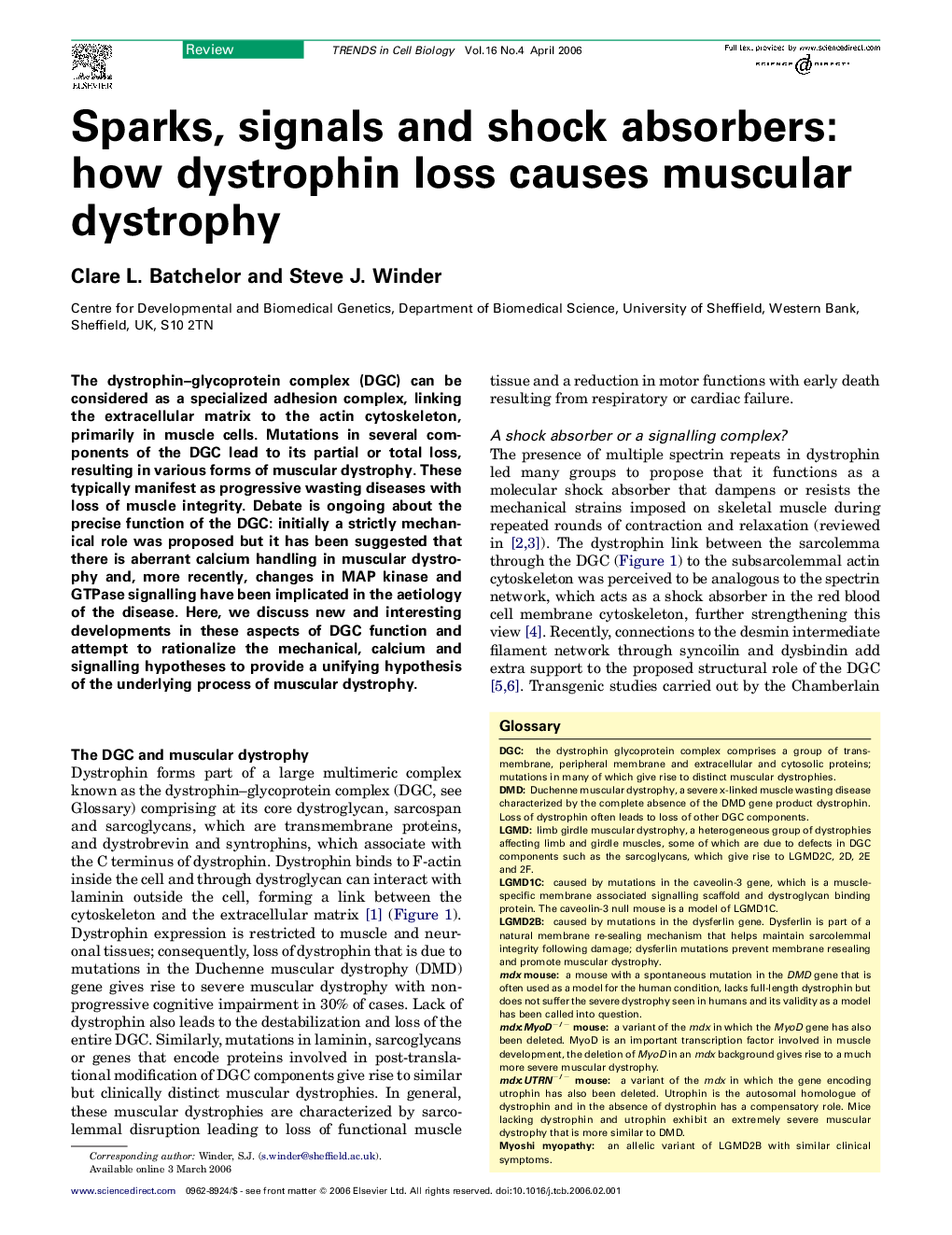| Article ID | Journal | Published Year | Pages | File Type |
|---|---|---|---|---|
| 2205245 | Trends in Cell Biology | 2006 | 8 Pages |
The dystrophin–glycoprotein complex (DGC) can be considered as a specialized adhesion complex, linking the extracellular matrix to the actin cytoskeleton, primarily in muscle cells. Mutations in several components of the DGC lead to its partial or total loss, resulting in various forms of muscular dystrophy. These typically manifest as progressive wasting diseases with loss of muscle integrity. Debate is ongoing about the precise function of the DGC: initially a strictly mechanical role was proposed but it has been suggested that there is aberrant calcium handling in muscular dystrophy and, more recently, changes in MAP kinase and GTPase signalling have been implicated in the aetiology of the disease. Here, we discuss new and interesting developments in these aspects of DGC function and attempt to rationalize the mechanical, calcium and signalling hypotheses to provide a unifying hypothesis of the underlying process of muscular dystrophy.
